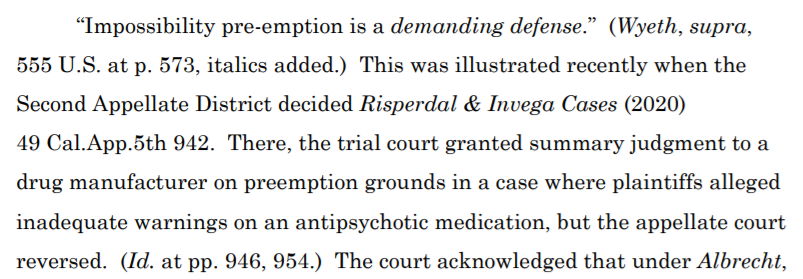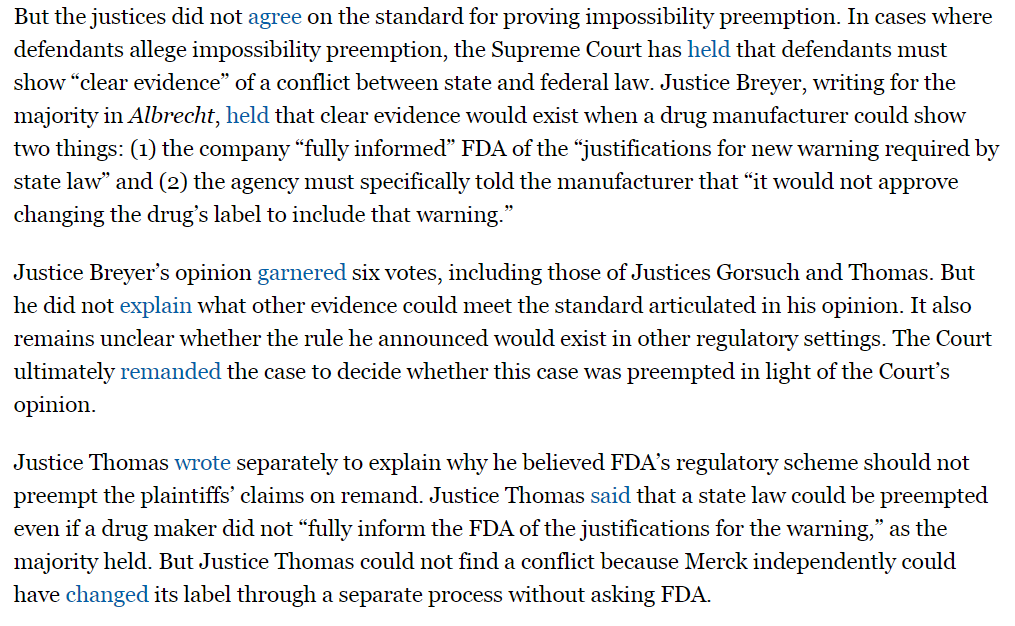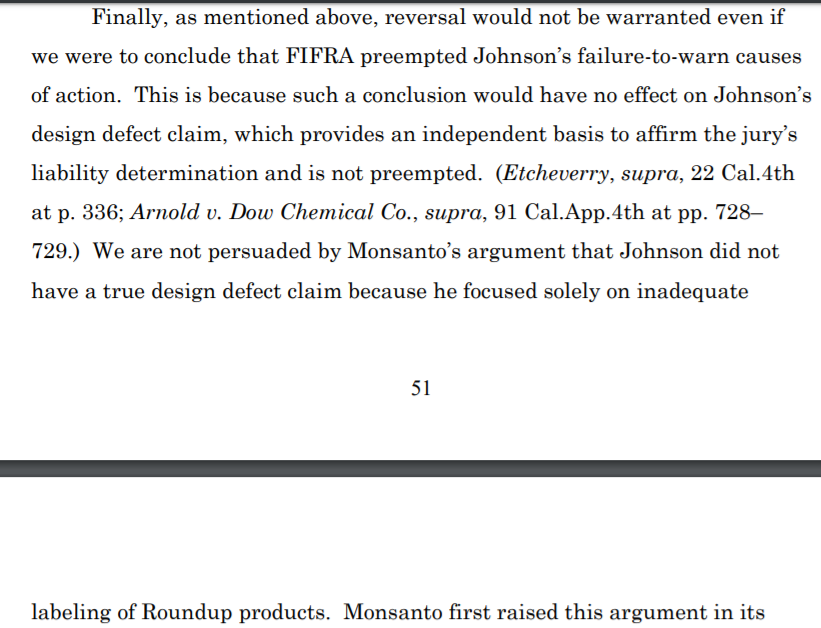1. Today& #39;s California Court of Appeals decision gives us a first-glimpse into how appeals courts may react to Monsanto& #39;s argument that cases should be dismissed because the EPA has found that Roundup is safe. Answer: there& #39;s something in it for plaintiffs and defendants. https://twitter.com/MariaDinzeo/status/1285335658773397504">https://twitter.com/MariaDinz...
2. Defendants may take heart that the court still left room for them to argue federal law preempts these claims in the future. This is because many of Monsanto& #39;s big preemption arguments were only given a boost after it filed its appeal in August 2019.
3. It wasn& #39;t until August 2019 that the EPA said that it was illegal under federal law for companies like Monsanto _to include_ warnings that glysophate could cause cancer. It went a step further: telling companies to remove those warnings in 90 days. https://www.epa.gov/sites/production/files/2019-08/documents/glyphosate_registrant_letter_-_8-7-19_-_signed.pdf">https://www.epa.gov/sites/pro...
4. The Court said Monsanto had evidence that "arguably would support an impossibility preemption defense"--that it would be impossible to comply with EPA regs and state law at the same time. But EPA& #39;s position was "evolving" and not a "factual determination" for appeal.
5. On the other hand, the Court also left a lot for plaintiffs, noting the "demanding standard" for such a defense. Borrowing from a recent Supreme Court case, Albrecht, the court said Monsanto would have to show it gave EPA all the material info and EPA still rejected the label.
6. As I& #39;ve said elsewhere, that test got six votes from liberals and conservatives on the Supreme Court. But it& #39;s not clear if all of the Court justices believe that is the standard, whether it is dicta, or if it should apply outside of FDA regulations. https://www.theregreview.org/2019/07/18/zimmerman-after-merck-albrecht/">https://www.theregreview.org/2019/07/1...
7. But if it is the standard, that might be a particularly high bar, especially for claims based on Monsanto& #39;s warnings predating the 2019 EPA announcement.
8. Finally, the Court says that even if labeling claims are preempted in another case, product defect cases (that the risks of glysophate outweighed the benefits) are not. This is because the court felt the plaintiff& #39;s design defect claim has nothing to do with labeling.
9. Not every court has agreed with this. Judge Chhabria, who has all the federal cases, suggested plaintiffs& #39; claims were essentially claims that Monsanto failed to warn, even though his jurors found a product defect too. (But he also found no preemption). https://www.baumhedlundlaw.com/pdf/monsanto-documents/Hardeman/2937.%20(03-07-2019)%20PRETRIAL%20ORDER%20NO.%20101-%20ORDER%20RE%20MONSANTOS%20MOTION%20FOR%20SUMMARY%20JUDGMENT%20ON%20NON-CAUSATION%20GROUNDS.%20Sig.pdf">https://www.baumhedlundlaw.com/pdf/monsa...
10. Nevertheless, the case highlights that while Monsanto& #39;s preemption defense may offer more ammunition than previously expected, it may not be the "silver bullet" it has hoped for. https://www.reuters.com/article/us-bayer-glyphosate-lawsuit-appeals-anal/bayer-bets-on-silver-bullet-defense-in-roundup-litigation-experts-see-hurdles-idUSKCN1SM2R3">https://www.reuters.com/article/u...

 Read on Twitter
Read on Twitter







